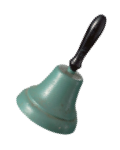37 Emerald Hill Site Tours
18 - 19, 25 - 26 May • 10:00am •
18 - 19, 25 - 26 May • 02:00pm •
Come along for the first ever public site tours of 37 Emerald Hill, former home of Singapore Chinese Girls’ School, the first locally founded secular school for girls by our Straits-born community and conserved through a ground-up community effort.


